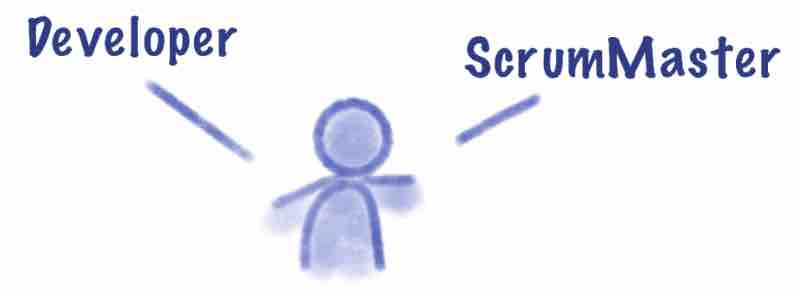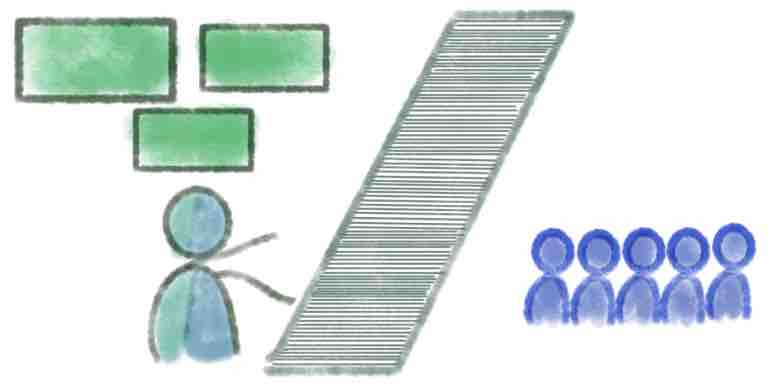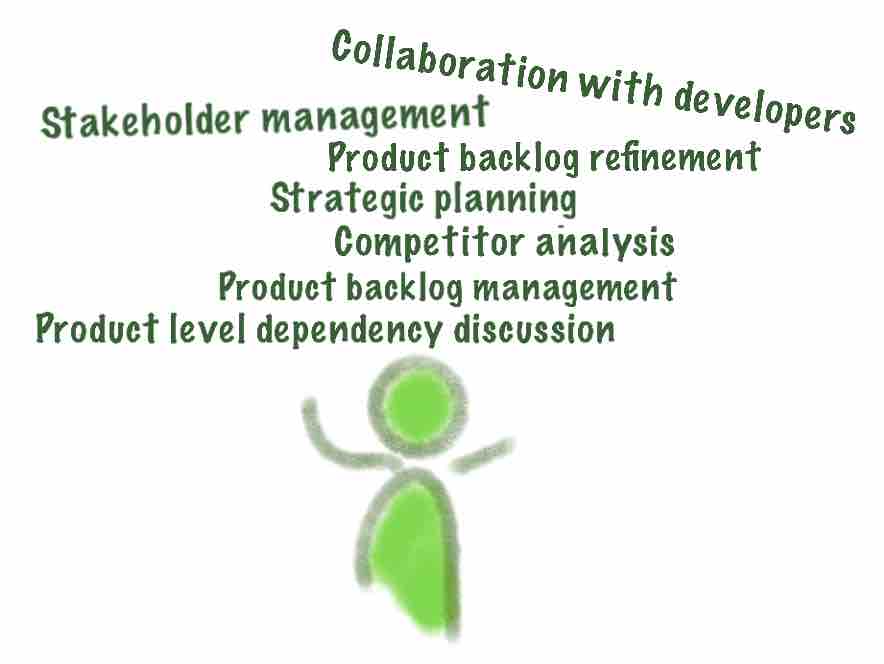In the 2020 November release of the Scrum Guide, the term role was replaced by accountabilities to leave spaces for organizations to make Scrum accountabilities more specific for their context and situations (West, 2021).
So far I haven’t quite seen yet how this change improved role related challenges. Challenges with roles persist globally across industrial and geographical regions. This is particularly true for organizations who have started their Agile transformation and have started working with new terminologies.
Let’s analyze this further today.
Defined in sociology originally, roles have been used in organizations large and small. The term role in sociology describes a set of expected behaviours and obligations associated with a particular position. For instance, I may play the role of a wife, a mother, a trainer, a coach, a daughter, a friend, a customer, etc. Each comes with a set of expectations and obligations as you can see.
Roles not only lay out a blueprint to guide behaviour, but they also delineate the goals to pursue, tasks to carry out, and how to perform for a particular scenario. In addition to guiding behaviours, roles also influence our beliefs as the theory holds that people will change their attitudes to be in line with their roles. One example can be people changes their views on parenting once they become parents.
There are a few changes people may face with roles.
Sometimes performing one role might clash with what’s needed to perform another, and these roles don’t necessarily work well together. This will create Role Conflict situation. Role Conflict makes it difficult for people to know how to behave during a certain situation. In ORSC* (Organization Relationships Systems Coaching) language, role conflict is named as role confusion. Role confusion occurs in a situation where an individual has trouble determining which role he or she should play, where the roles are not necessarily incompatible.
There are some common role conflict scenarios in an organization, working with Agile and Scrum. Some managers have their own perception of ScrumMaster roles and see ScrumMaster roles as getting Scrum events in place. Then naturally, a manager would want to minimize the overhead in doing so. Hence some ScrumMasters are asked to have two roles, ScrumMaster and Developer. This creates potential role conflict. A person in such a situation may have different voices in their head. “Do I comment as a ScrumMaster, or a Developer?” “Do I now spend time as a ScrumMaster, or a Developer?” “Should I focus on getting team reflect on improvements or getting user stories completed?”

As you can see, this situation [ScrumMaster as a developer] can create pressure a person to take on different behaviours.
Another situation leading to Role Conflict is a person taking a role that overlaps with other roles. This also unavoidably creates Role Conflict for others whose role gets overlapped. “Should I do this or is Amy supposed to do this?” becomes a frequent question and pressure.
Companies tend to create roles such as Agile Project Manager, or Agile Delivery Lead, while still uses the original Product Owner role from Scrum framework. This can create potential Role Conflict to the Product Owner, the Agile Project Manager, the Delivery Lead, and others in the context. This creates tension, stresses, and pressure to all involved.
Role Overload (Creary & Gordon 2016) happens under two possible situations. role overload happens when someone fills multiple roles simultaneously and struggles to meet these roles’ demands as a result.
One situation results from a role that exceeds the abilities and can also exceed the motivation of a person to fill it comfortably. A ScrumMaster who takes this role seriously tries to work with developers, product owner, inter-team topics, and organizational impediments.

Using Product Owner as an example, we can see a few scenarios leading to Role Overload.
Some companies have product owner roles, but this product owner works as a full-time editor of the product backlog. Details on the user stories, acceptance criteria, back and forth, while lacking of business context and product related information.

Some companies have true product owner roles, who actively optimizes return on investment of the product and the successes of the product. The product owner has many different topics on the plate. Due to a number of reasons, the product owner is overloaded with all different things to look into for the success of the product.
Different from the above examples, the other Role Overload surfaces is when one person fills multiple roles simultaneously and struggles to meet these roles’ demands as a result. For example, a person is working as the ScrumMaster for multiple teams. I have worked with clients where they have one person as a ScrumMaster for 5 ScrumTeams, to be “efficient”.
Some organizations have the role of Chief Product Owner (CPO). The CPO is supposed to ensure the successes of the product and optimizes return on investment. At the mean time, the CPO also has a handful of employees reporting to him or her, and takes care of individual performance, developmental topics. More often than not, we see Role Overload in this situation. As a result of this, the organization runs into the situation of, product is not successful, employees are not engaged, or both unfortunately.
Product Owner role in Scrum framework is expected to collaborate with stakeholders and hear their insights. A situation of Role Overload can be, the Product Owner does not hear any feedback and applies strong avoiding stance when different opinions are brought up. As a result, the situation is entirely against “Never push a loyal person to the point where they no longer care.” Stakeholders may jump boats, may remain in the boat but with very little motivation.
In ORSC* language, this is called “poorly occupied role”. This occurs when the person(s) occupying a role is bad at it.
In contrast to role conflict and role overload, Role Ambiguity refers to a lack of clear information regarding the expectations of a role, how to fulfill these expectations, or the consequences of role performance (Mobily 1991).
Some companies, while starting their Agile transformation, start to assign project managers to be agile coaches. While holding on the career path of a project manager, individuals in this situation can be very confused. It is confusing from many different dimensions, for instance, competency, mindset, focuses, and expectations. There is of course the constant question a project manager asks,“How is my role measured?” “Should I do it or not?” “What would others say if I do this?”
There can be a list of commonly seen role related problems in organizations which are in their agile transformation journey. Summarizing the challenges can help proactively prevent this from happening, consciously aware, actively evaluate situations for possible role challenges in order to act upon these challenges and frequently evaluate real situations at work.
What are some role related challenges you are currently experiencing in your organization? Remember, the greater the role related challenges are, the higher the likelihood of a person experiencing stress, frustration, and decreased productivities. That’s the impact to the person occupying the role. There are also similar impacts to people working with them. This impedes the development of your organization and hinders the Agile transformation journey.




